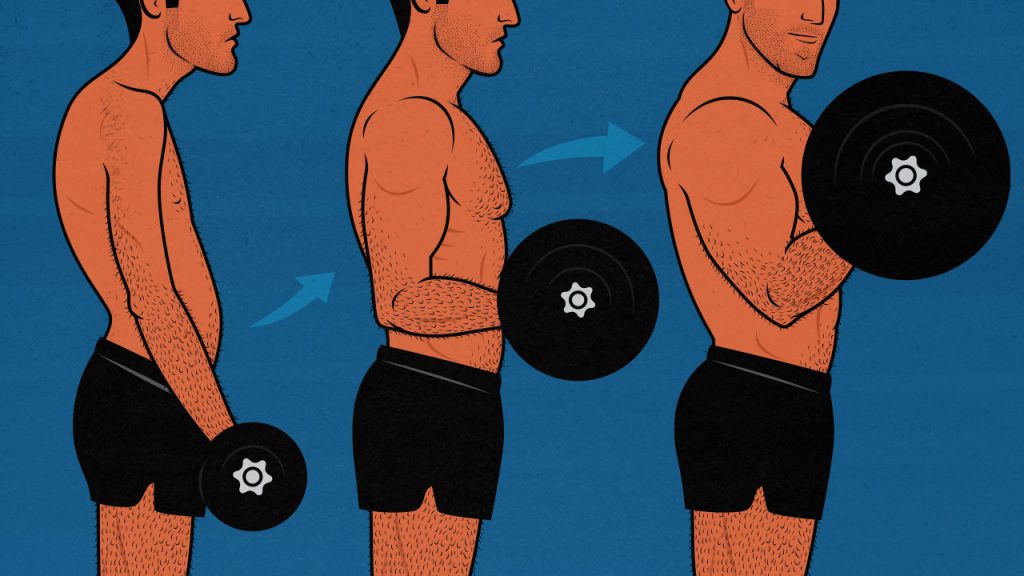
Should Skinny Guys Get Strong to Get Big?
A bigger muscle is a stronger muscle. If you want to get big, you’ve got to get strong. That was the main bulking dogma when I was first trying to bulk up, but I didn’t understand it properly, and my results left me feeling confused. Everyone was preaching some variation of:
- The best way to build a bigger chest is to build a bigger bench press.
- Nobody who does chin-ups with two plates around their waist has skinny arms.
- If you get strong at the compound lifts, you’ll be big.
But if any of that is true, what’s going on with massive bodybuilders being outlifted by much smaller powerlifters? Why do some guys with a three-plate bench press barely look like they lift? How is that tall, skinny guy deadlifting 500 pounds?
Is getting stronger really the best way to build muscle?
How do you become big and strong?
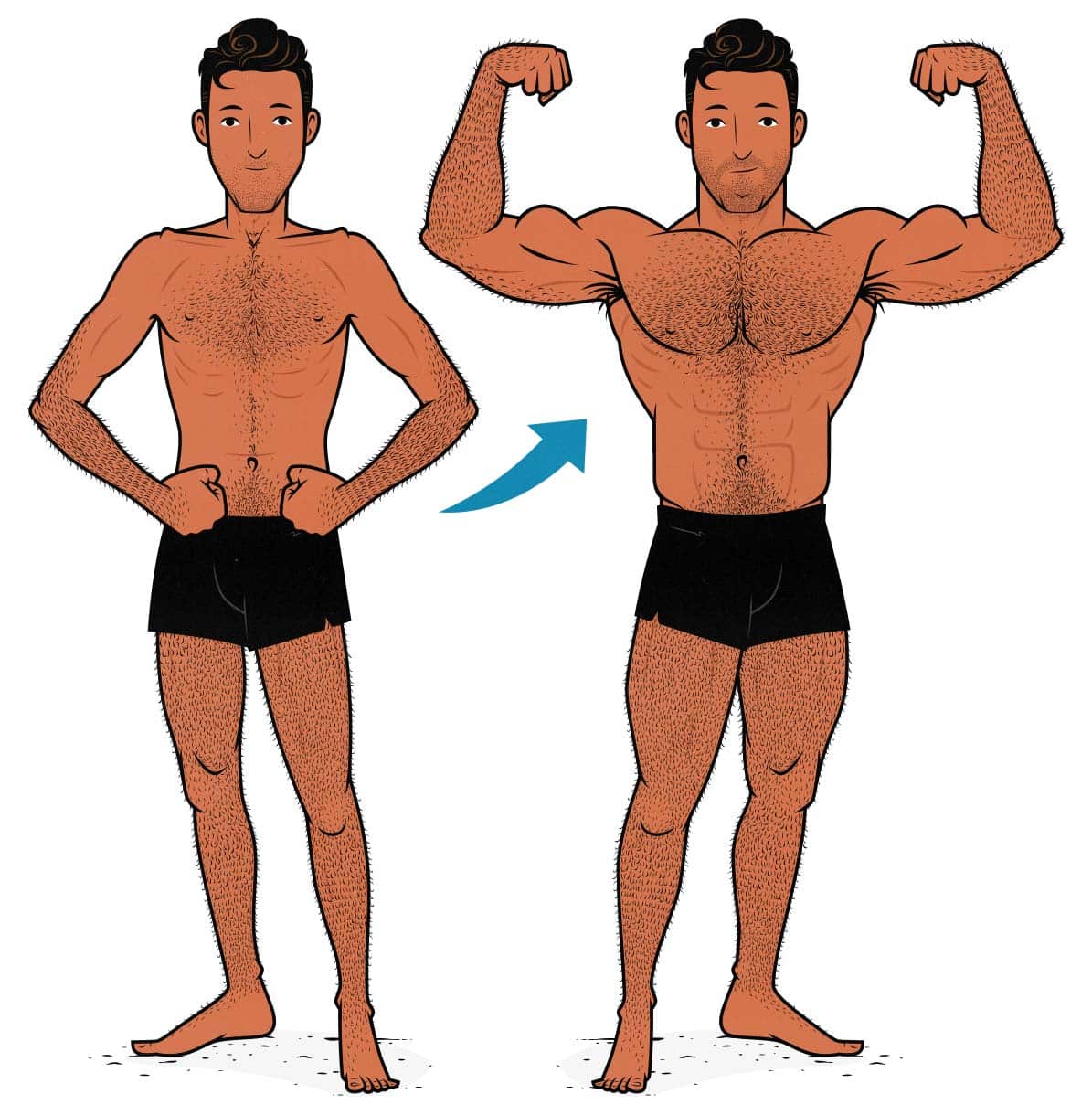
Becoming Both Big & Strong
As a skinny dude trying to bulk up, I never really identified with powerlifters or bodybuilders. I wasn’t part of either subculture. I wasn’t even part of the lifting community in general. I was just a geeky skinny dude who was tired of being scrawny and weak. That’s just me, though. So the other day, I ran a poll on our YouTube channel. I asked you guys what you wanted the most: size, strength, or a balanced mix of both:

58% of you wanted to be balanced—to be both big and strong. I feel the same way. I’m not a powerlifter. I don’t need to be specialized in just three arbitrary lifts. I’m not a bodybuilder, either. I don’t need to devote myself to bulking up every muscle, performance be damned.
Mind you, it was a bit of a trick question. I wanted to see what you would want if you couldn’t have everything. Thing is, you can have everything. You should have everything. The best way to get stronger is to climb closer to our genetic muscular potential. The best way to get bigger is to march towards our genetic strength potential. The two goals are happily married.
But there are quite a few catches that can totally trip us up. They certainly tripped me up, anyway.
If you want to watch the video, I made a video version of this article for our YouTube channel. If you want to read the article, read on!
Genetic Strength Factors
Before we talk about how to become big and strong, we have to explain why you can’t quite believe your eyes. Or, maybe a better way of saying it is: you have to train your eyes to know what “strong” looks like. Different people train for different kinds of strength, different people have different strength genetics, and so strength can look different on different people.
Muscle & Tendon Insertions
There are a few factors that influence strength. Where your muscles connect to the bone is one of the bigger ones, especially since you can’t tell just by looking at someone. Most people’s biceps tendons connect around 3cm away from their elbow joints, but if your tendons connect just one centimetre further out, you’ll be able to barbell curl about a third more weight—just from having better leverage.
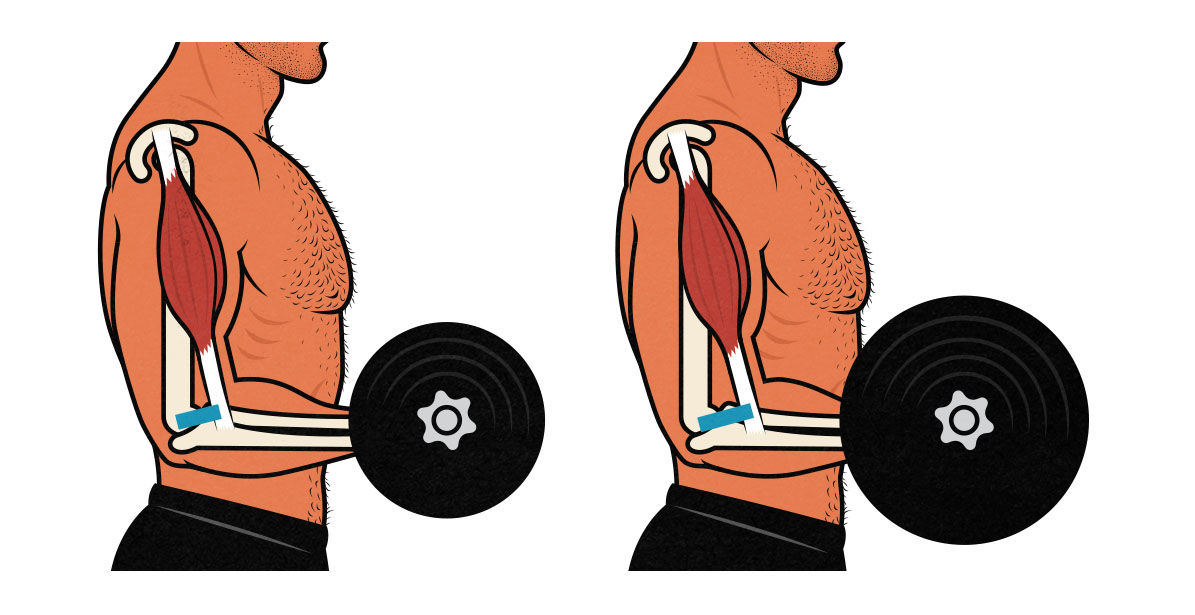
Many freakishly strong people have incredibly good muscle insertions. It’s rare for it to make a massive difference, but rare people exist, and so if you go hunting for powerlifting records in lower weight classes, you’ll absolutely find them. You’ll find some skinny guys putting up huge numbers.
Skinny Body Proportions
The length of your segments is another big one, especially if you’re a tall, lanky, skinny guy (like me). Sticking with the barbell curl example, if your forearms are 10% longer than someone else’s, that will make the external moment arm 10% longer at the hardest point of the curl, and so you’ll be able to curl 10% less weight.
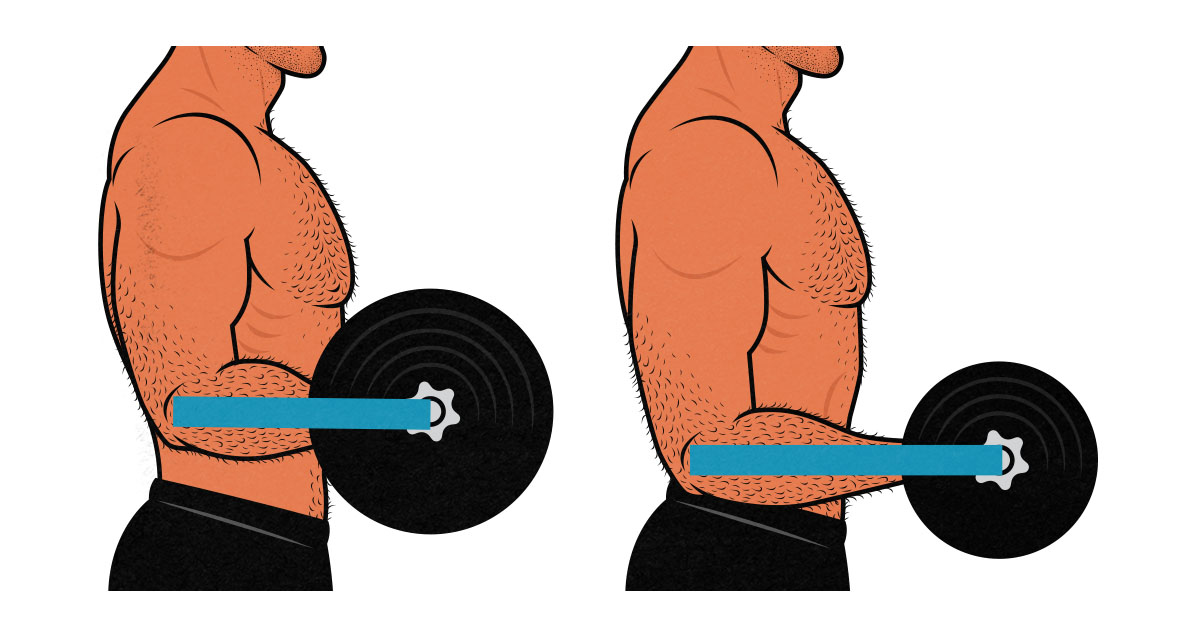
It’s not quite that simple. People with longer forearms tend to have proportional tendon insertions, partially cancelling out the disadvantage, and thus granting them fairly similar leverage. But we aren’t really talking about what’s normal, we’re talking about why some people are shockingly strong whereas others are surprisingly weak. We’re talking about genetic outliers.
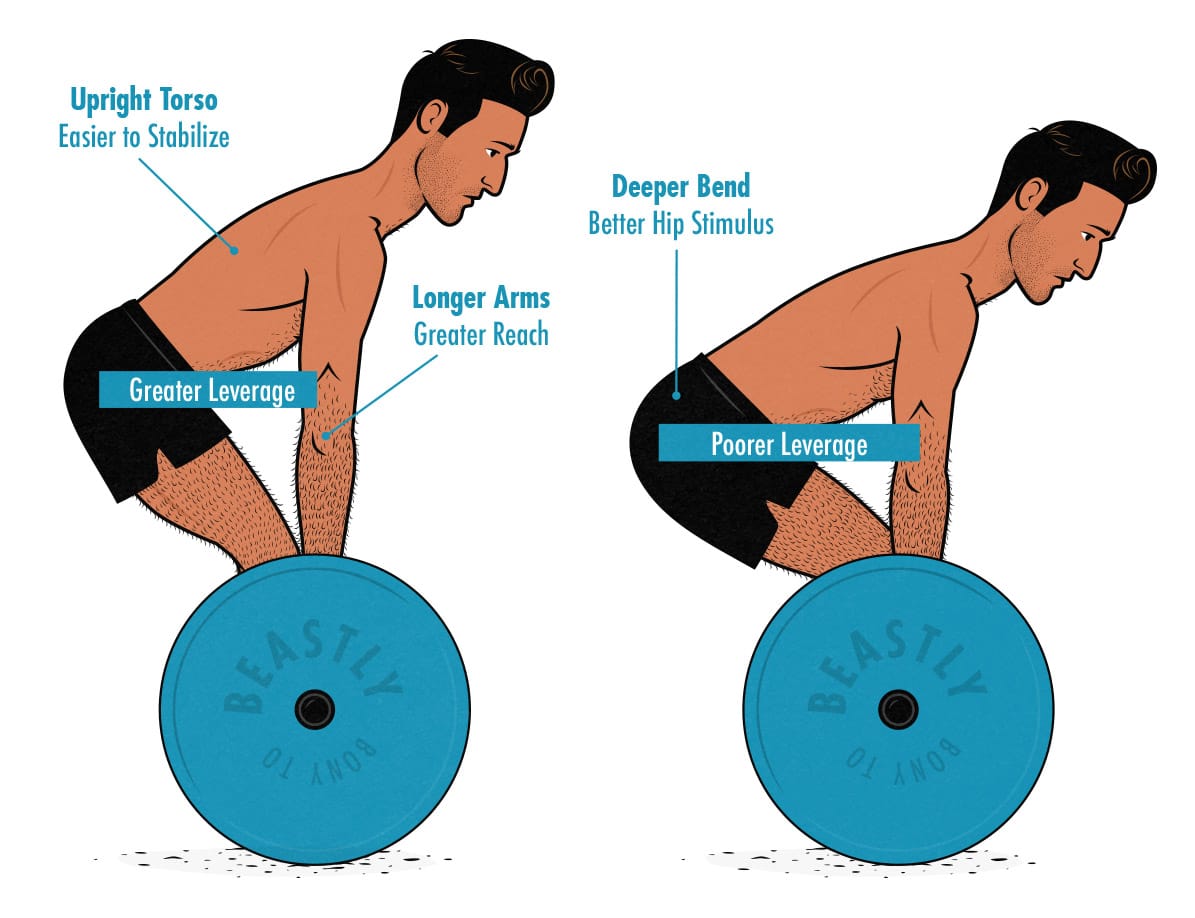
The other thing to remember is that having long arms can also be a genetic advantage. They give you greater reach, which is a huge advantage when doing deadlifts. Mind you, if you have a long torso to match your long arms, you might have more difficulty stabilizing your spine. If someone has the magic mix of a short torso, long legs, and long arms, though, then they’re often able to deadlift quite a lot more than you’d expect.
Keep in mind that having bad powerlifting proportions doesn’t mean you have bad bodybuilding proportions. If you look at the above illustration, the guy with the shorter arms is training his glutes and hamstrings under a deeper stretch, and he’s putting more load on his spinal erectors. He might not be able to deadlift as much weight, but he’s in a great position to stimulate a ton of muscle growth.
The same is true with lifts like the bench press. Guys with thicker ribcages and shorter arms might be able to press more weight, but the skinny guy with a thinner ribcage and longer arms will be able to get a much deeper stretch on his chest and press the weight through a far larger range of motion. As a result, the bench press is a better muscle-building lift for the skinny guy, even though he’s proportionally weaker.
Finally, just because your proportions aren’t optimized for a lift doesn’t mean you’re doomed to stay weak at it. I have long arms and a shallow ribcage. I was able to slowly work up to a three-plate bench press, and I think I can still push it quite a bit further. The same is probably true for you.
Muscle Fibre Types
Different people have different ratios of slow-twitch and fast-twitch muscle fibres. Slow-twitch fibres have more endurance. Fast-twitch fibres are more explosive. The slow twitch fibres have better blood, making them red, and giving them greater endurance. The fast twitch fibres are more anaerobic. They’re white. They’re powerful but they fatigue far faster.
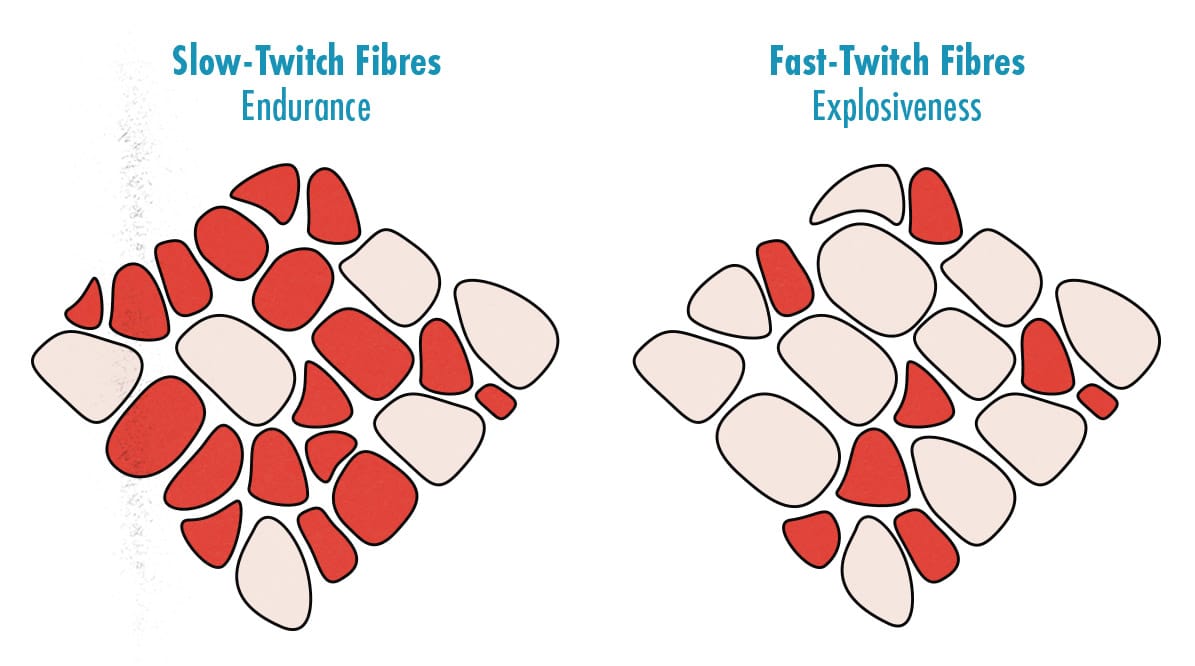
The proportion of your slow-twitch and fast-twitch muscle fibres has less to do with being strong for your size, though. Slow-twitch fibres can help you grind through heavy singles. It’s not like they’re useless, even in powerlifting. Where having proportionally more fast-twitch fibres really helps is with sports like Olympic weightlifting. They’re also bigger, which can make them great for bodybuilding.
Genetics Are a Distraction
These three factors are why some people are shockingly strong for their size, whereas others are surprisingly weak. Most of us are within arm’s reach of average, though, and the bigger guy is usually the stronger one. In fact, if we look at studies that compare how strong men look against how strong men are, most people are able to sort men from weakest to strongest just by looking at them (study). It’s only when we look online that we tend to see the outliers.
The important thing to keep in mind is that our genetics are what they are. We can’t change them. They don’t really affect how we should train, either, other than the fact that we should choose lifts that suit our proportions. If you have long legs and a short torso, it will be harder to keep your torso upright while squatting, so you might want to shift the weight forward, favouring goblet squats, front squats, hack squats, and safety-bar squats. If you have a long torso, it can be harder to stabilize your spine while deadlifting, so you might want to adopt a sumo stance or use Romanian deadlifts. If you have long arms, it can be hard to fill them out, so you might want to do extra biceps curls, triceps extensions, and forearm exercises.
Also, just to be clear, being skinny isn’t a genetic disadvantage. Plenty of skinny guys are able to build tons of muscle and become impressively strong. It’s just that we often start off smaller and weaker, and so we need to build more muscle to catch up.
Strength is More Than Powerlifting
Powerlifters and bodybuilders often have fairly similar strength and size genetics, it’s just that they’ve specialized their bodies in slightly different ways. The powerlifter has focused on increasing his one-rep max on the squat, bench press, and deadlift, becoming stronger for his size. The bodybuilder has focused on gaining overall muscle mass.
Does that mean the powerlifter is stronger but smaller, whereas the bodybuilder is bigger but weaker? Not quite. And if we forget about the link between size and strength, building muscle becomes much more confusing. It becomes much harder to make consistent progress.
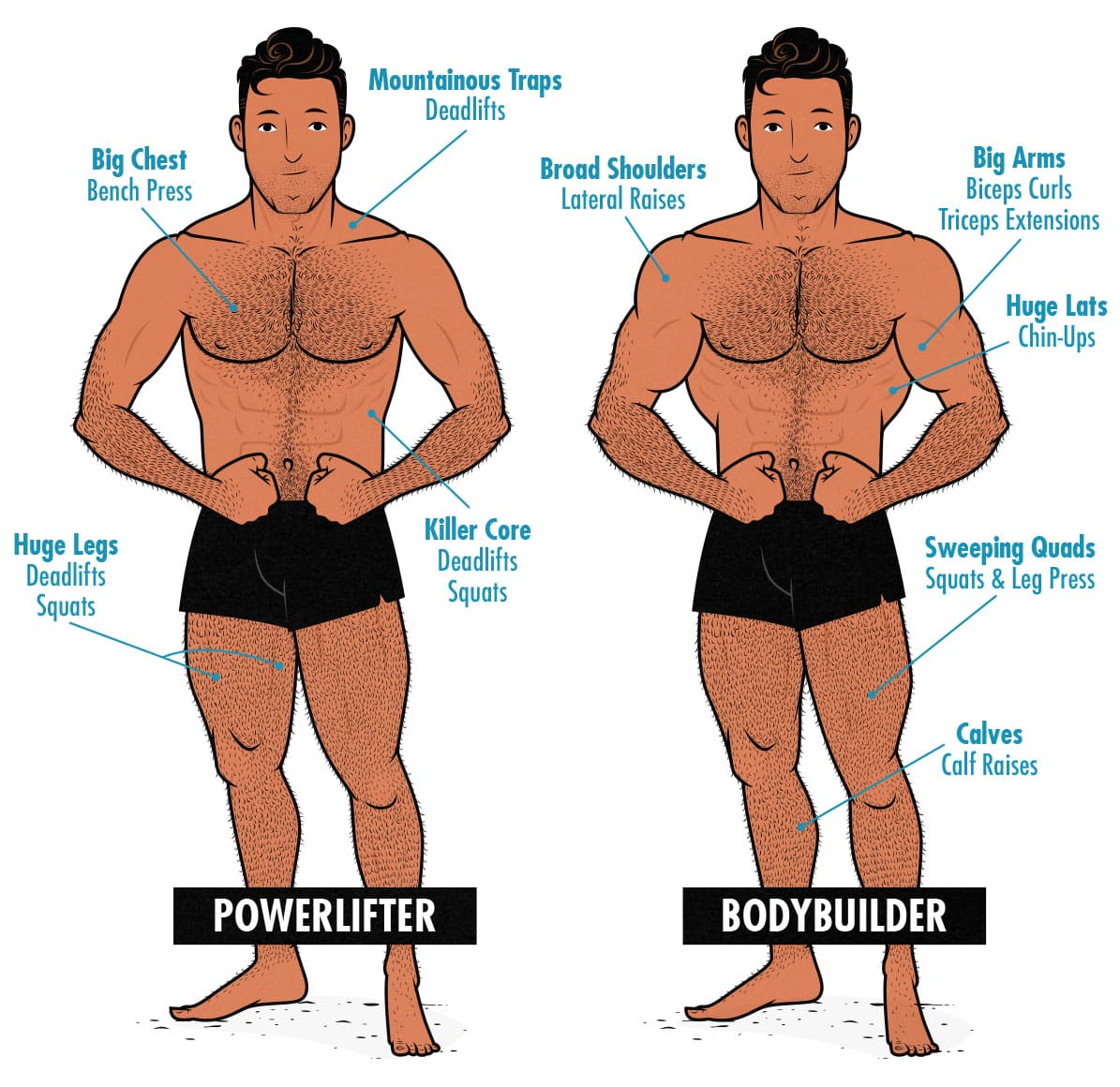
A bigger muscle really is a stronger muscle. When the bodybuilder is building bigger muscles, those muscles are growing proportionally stronger. So what’s really going on here? Is the powerlifter actually stronger?
Powerlifting, Strongman & Callisthenics
The first problem is semantics. Technically, strength is “the ability to move heavy weights or do other physically demanding tasks.” But powerlifters define it much more narrowly than that. To them, strength is how much you can squat, bench press, and deadlift for a single max-effort repetition. It’s not a terrible definition of strength. The powerlifting lifts were chosen because they do a good job of testing overall strength:
- Squats are an amazing test of lower-body strength. They’re usually limited by the strength of your quads and glutes—the two biggest muscles in your body.
- The bench press is a great test of upper-body pushing strength.
- The deadlift is a great test of pulling strength. You need strong hips, strong spinal erectors, and a strong upper back.
At the beginning, powerlifting was a collection of lifts designed to test overall strength. They were doing squats, bench presses, deadlifts, overhead presses, and barbell curls. The problem is, as powerlifting became more competitive, powerlifters started trying to game the system. On the overhead press, people kept leaning further and further back, bringing their chests into the lift, turning it into a standing bench press. So they got rid of it. They used the bench press instead.
Now they’re running into similar issues with the bench press. People are arching their backs more and more, cutting down their depth to improve their leverage. Powerlifting became more of a strength sport, less of a test of true strength. That’s why you’ll see powerlifters doing low-bar squats, wide-grip bench presses, and wide-stance sumo deadlifts. These aren’t the best variations for developing general strength. They aren’t the best lifts for building muscle, either. And it explains why some smaller powerlifters are able to outlift the bigger ones. Their muscles aren’t stronger, they’re just better able to optimize their leverages.
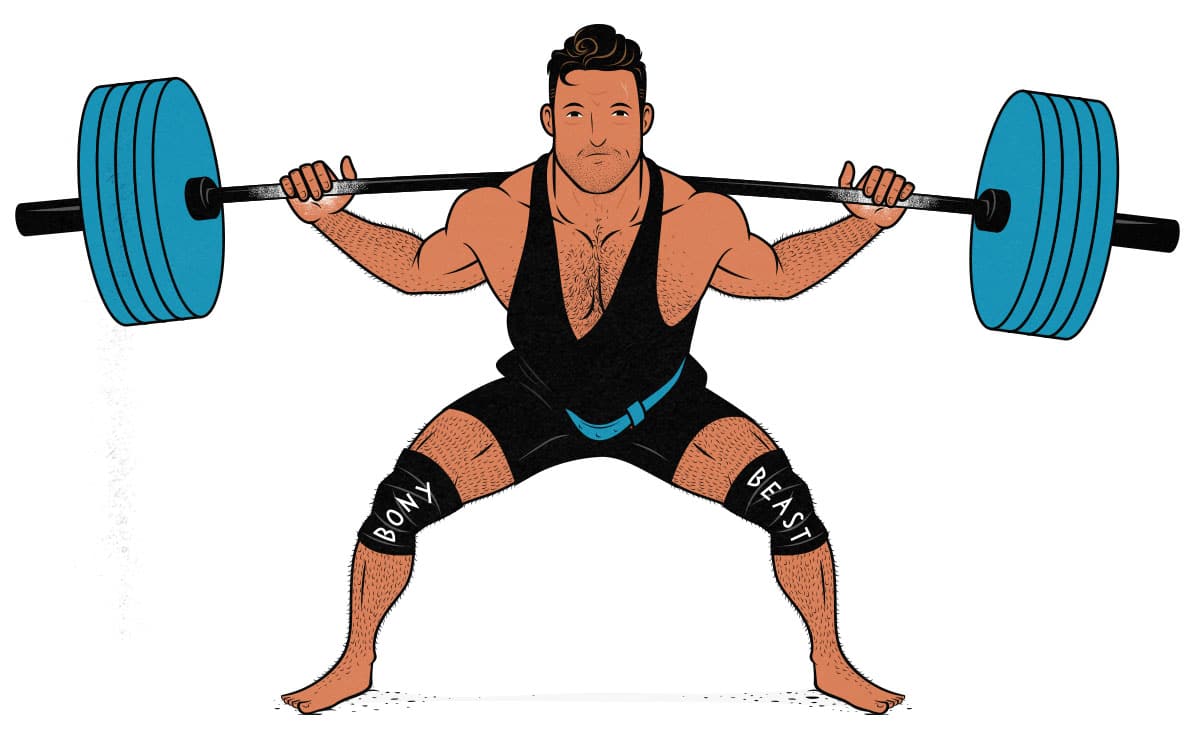
If you compare powerlifting against other strength sports, you can see where this gets kind of ridiculous. Is the powerlifter the strongest because he can bench press the most weight? Is the strongman the strongest because he can carry the biggest stone? Is the callisthenics athlete the strongest because he can do the most chin-ups? It doesn’t work like that. They’ve all got different definitions of strength. They’re all strong at slightly different things.
Are Bodybuilders Strong?
Bodybuilders train for size, not strength. Kind of. To get bigger, they do too need to get stronger. They still need to focus on adding weight to the bar. They still need to prioritize progressive overload. They have to. It’s by far the best way to grow—maybe even the only way to grow. It’s just that powerlifters get bigger to get stronger, whereas bodybuilders get stronger to get bigger.
Because bodybuilders are trying to get bigger everywhere, they do a wider variety of lifts in a wider variety of rep ranges, building bigger muscles overall. They do squats, bench presses, and deadlifts, but they also do chin-ups, rows, biceps curls, triceps extensions, lateral raises, and dozens of other lifts for hundreds of other muscles. That gives them more general strength, but it also makes them less specialized in any given strength sport.
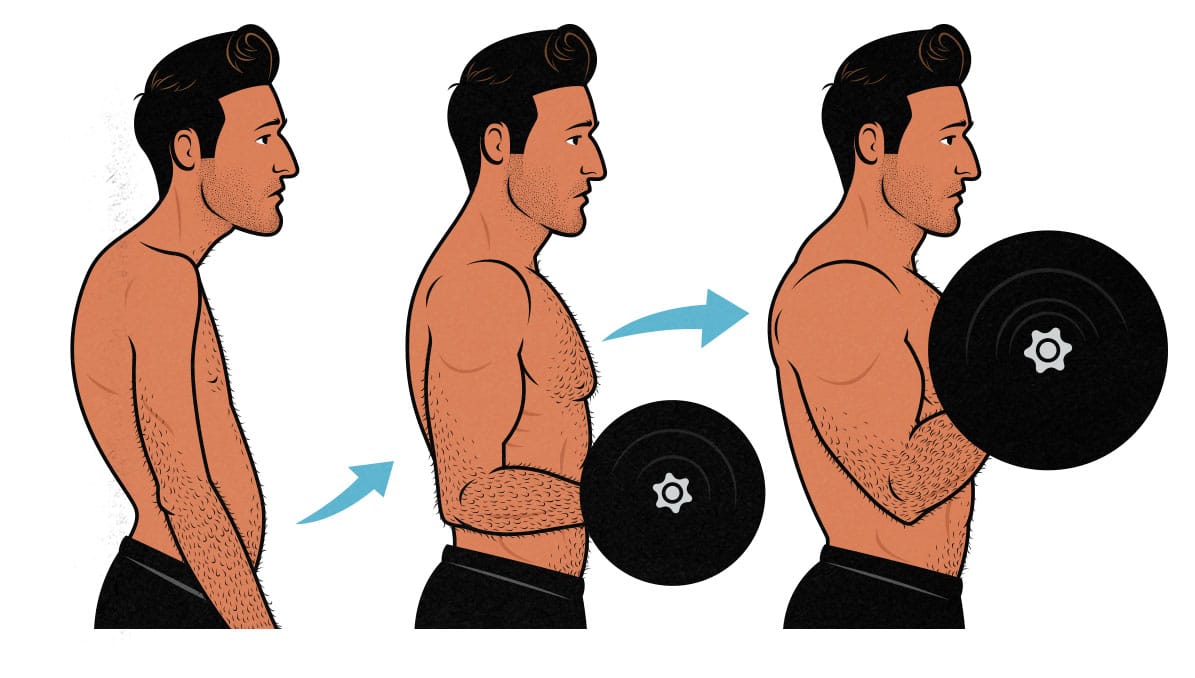
Let’s start with a simple example. The bodybuilder trains his biceps, the powerlifter might not. After all, building bigger biceps won’t build a bigger squat, bench, or deadlift. That means the bodybuilder has bigger arms, and yet that extra size won’t increase his powerlifting total, making him weaker for his size. But only if we’re using a powerlifter’s definition of strength, and only if we’re holding the bodybuilder’s size against him.
Bigger biceps are stronger biceps, and so, all else equal, the bodybuilder will be able to curl more weight than the powerlifter. In that sense, the bodybuilder is stronger. The bodybuilder might also be able to do more chin-ups, row more weight, and carry more weight in his arms.
This also explains why the powerlifter can squat, bench press, and deadlift a ton of weight, even with relatively thin arms. Smaller arms are weaker arms, but weaker arms won’t limit you when you’re doing squats, deadlifts, and ultra-wide-grip bench presses. The powerlifter is far more interested in bulking up his quads, glutes, core, front delts, and pecs. Those are the muscles he needs to succeed at his sport.
How to Become Strong
Bulk Up the Limiting Factor
To build a big bench press, you probably need to build a big chest. Not always, but usually. I’m an example of that. I bench with my chest, so my chest size is proportional to my chest strength. But some guys bench narrower, favouring their shoulders and triceps. Building a bigger bench press will bulk up a pressing muscle, but it might not be the one you expect. It all depends on your proportions, what technique you use, and how stubborn your chest is.
- If you’re trying to get stronger, as a powerlifter would, then you can focus on bulking up the muscles that contribute the most to your lifts. In this case, your chest or your shoulders. If your triceps are limiting you, add in skull crushers.
- If you’re trying to get bigger, as a bodybuilder would, then you should use a mix of lifts. Some of those lifts should be limited by the strength of your chest (bench press, dips, chest fly). Others should be limited by the strength of your shoulders (incline bench, overhead press, lateral raise). And yet others should be limited by the strength of your triceps (skull crushers, overhead extensions).
Reinforce the Weakest Link
The next thing to consider is that a chain will break at its weakest link. Powerlifters are trying to squat and deadlift a ton of weight. To do that, they need fearsomely strong hips to move the weight, but they also need incredibly strong spinal erectors to stabilize their spines. That’s why powerlifters will use a mix of lifts to strengthen both their hips and their cores. Think of lifts like conventional deadlifts, front squats, good mornings, barbell rows, hyper-extensions, and reverse hyper-extensions.
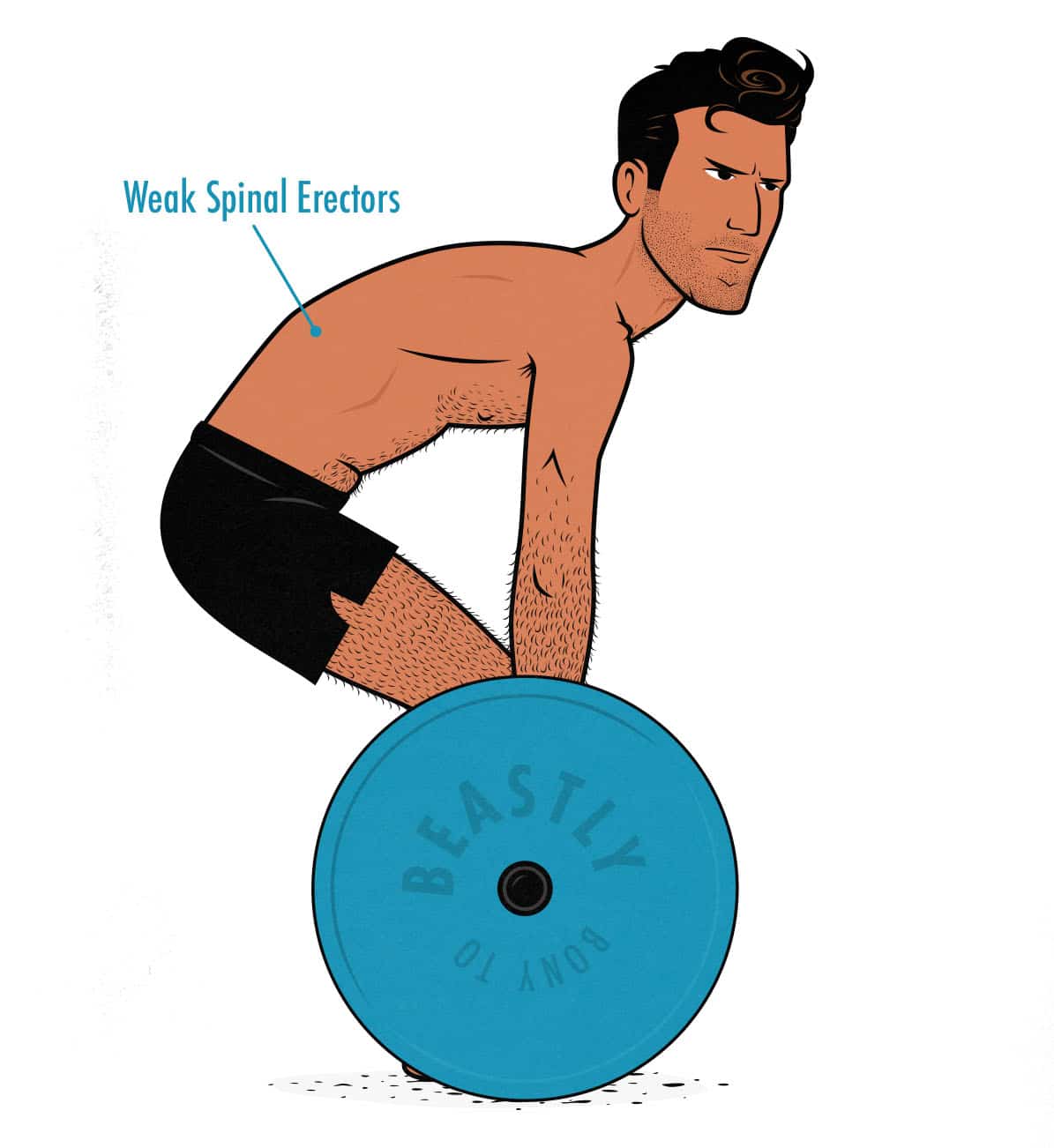
Bodybuilders want bigger spinal erectors, too—they look really cool—but it’s rare to find a bodybuilder who trains their spinal erectors with the same fervour as a powerlifter. If their deadlift is limited by the strength of their spinal erectors, that isn’t necessarily a problem. They can just use it to bulk up their spinal erectors. They don’t necessarily need to do extra assistance work. And so, even if the bodybuilder’s hips are just as big and strong as the powerlifter’s, the powerlifter might be able to deadlift quite a bit more weight because he’s done a better job of reinforcing the weak link for that specific lift.
How to Get Big
The Hypertrophy Rep Range
The next thing to consider is the repetition range that people train in. Bodybuilders are interested in building muscle, so they’ll use the rep range that stimulates muscle growth the most efficiently, rationing their strength over sets of six, twelve, or even twenty repetitions. That makes them quite strong in a moderate rep range.
The powerlifter, though, is training for maximal strength. They aren’t just trying to build bigger, stronger muscles, they’re trying to train their muscles to contract with full force, allowing them to give absolutely everything they have for one all-out repetition. To do that, they need to practice lifting in lower rep ranges with heavier loads. Those low-rep sets aren’t as efficient at stimulating muscle growth, and they don’t necessarily contribute very much to your “general” strength, but they can improve your one-rep max by quite a lot.
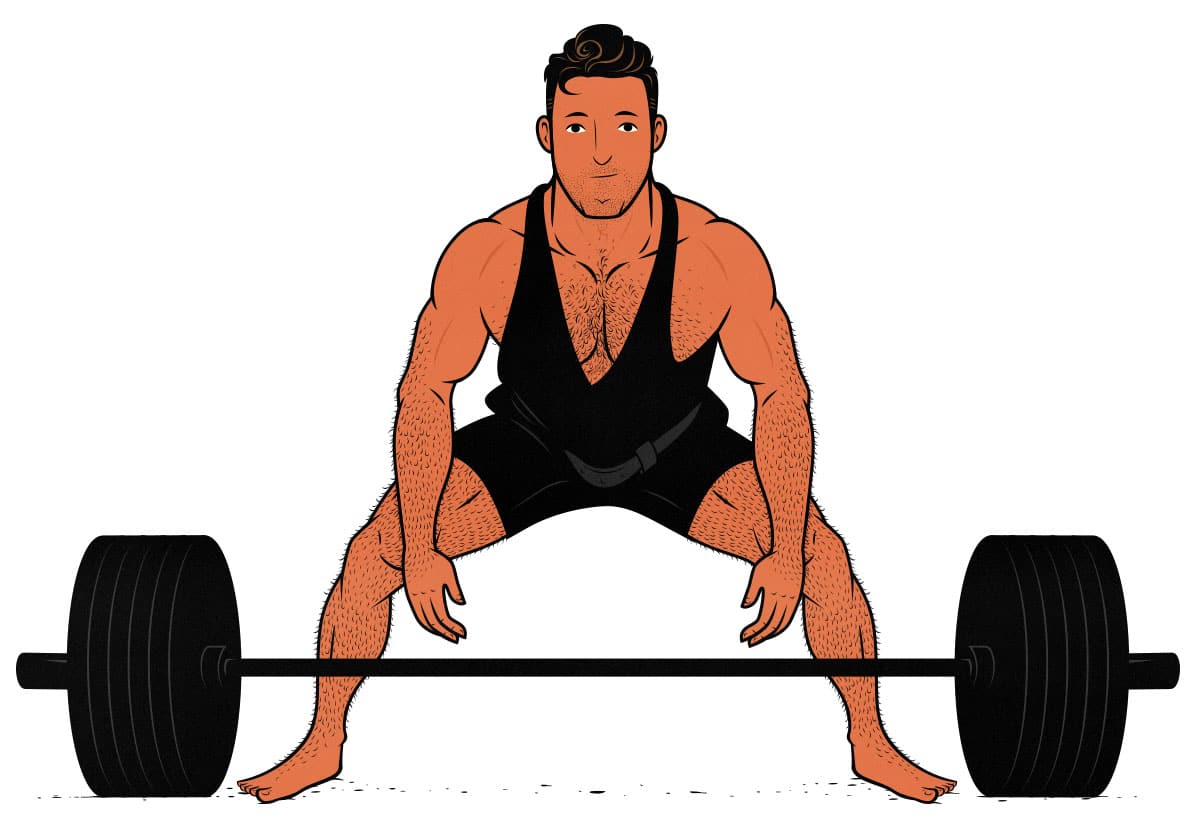
Keep in mind that your strength is always generated by your muscles, and bigger muscles are able to generate more strength. But if someone has been peaking for a powerlifting meet, they’ve been optimizing those muscles for lower rep ranges, allowing them to squeeze every ounce of force out of their muscles when they attempt a one-rep max. That’s another reason why you’ll see some skinny guys being able to lift more than you’d expect. They’ve gotten very good at recruiting all the motor units in their muscles all at once. And if they build those muscles even bigger, they’ll be even stronger.
The Best Lift for Gaining Size & Strength
A bodybuilder isn’t weak because he isn’t optimized for the deadlift. A strongman isn’t weak because he isn’t good at the bench press. A powerlifter isn’t weak because he sucks at barbell curls. We don’t need to let any one style of lifting define what strength is. You’ll develop the type of strength you train for.
If you want to become both big and strong, you can do hypertrophy training. You can pour all of your efforts into getting stronger at the lifts that work the muscles you’re trying to grow. You can get strong in a moderate rep range. You won’t be specialized for any one strength sport, but you’ll be strong overall, you’ll be big in a balanced way.
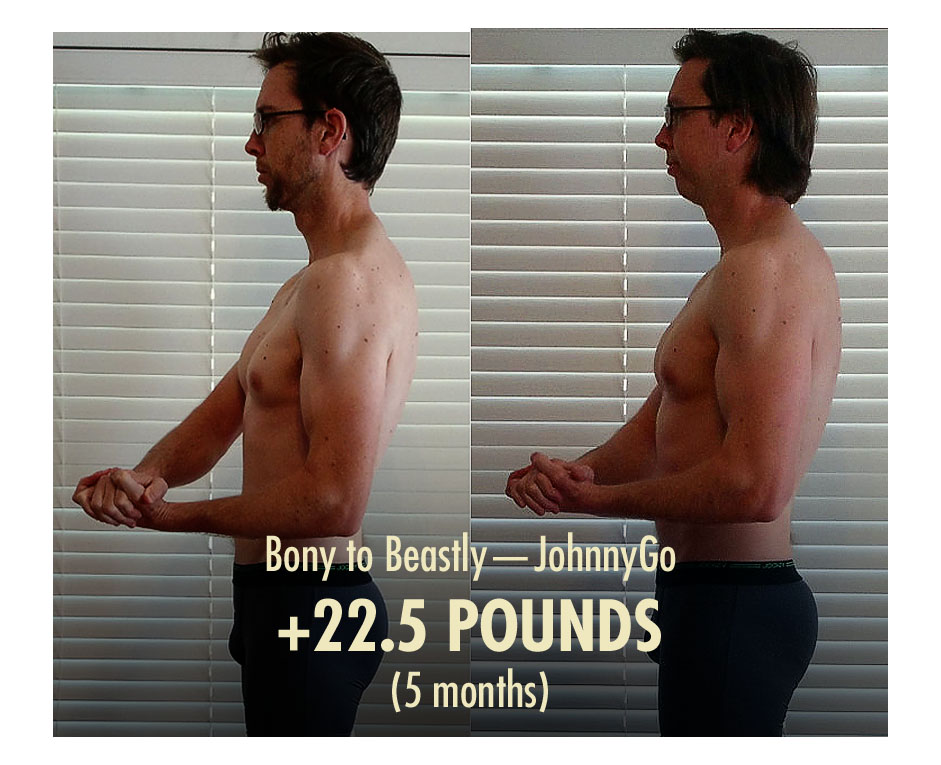
The big compound lifts will give you a strong foundation to build upon. The best powerlifters, callisthenics athletes, strongmen, and bodybuilders all get most of their muscle growth from the bigger lifts. But even then, they’re already very selective with the lifts they choose. Powerlifters don’t need big lats and arms, so they don’t need chin-ups. Callisthenic athletes don’t need big legs, so they don’t need squats. Strongmen don’t need big chests, so they don’t need bench presses.
You can do all the best compound lifts, and even then, some muscles will lag behind. It’s hard to build big arms without biceps curls and triceps extensions. It’s hard to build broad shoulders without lateral raises. And it’s hard to build a big neck if you never train it.
- If you want bigger legs, get stronger at deep squats, leg presses, and/or Romanian deadlifts.
- If you want to build a bigger chest, get stronger at bench presses, dips, and/or chest flyes.
- If you want to build a bigger back, get stronger at deadlifts, chin-ups, and rows.
- If you want to build bigger arms, get stronger at barbell curls, triceps extensions, and forearm exercises.
- If you want bigger shoulders, get stronger at overhead presses, incline bench presses, and lateral raises.
- If you want to build a bigger neck, get stronger at neck exercises.
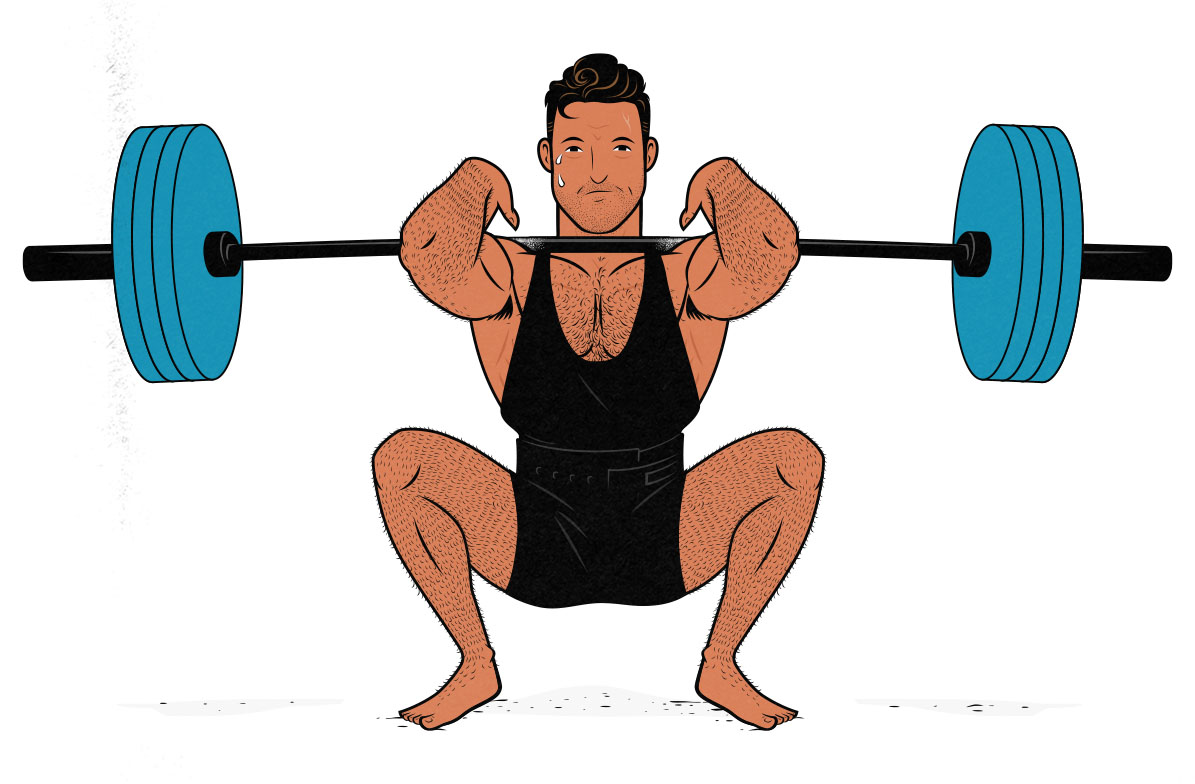
You don’t need to optimize your leverages. That isn’t the same thing as building stronger muscles. Instead, pick variations that are limited by the muscles you’re trying to grow, that allow you to get a deep stretch on your muscles, that feel good on your joints, and that you enjoy doing. For instance, maybe instead of a wide-grip bench press that emphasizes your mid-chest and hurts your shoulders, you do a moderate-grip bench press that works your entire chest, your shoulders, and your triceps—without causing any joint pain. If your shoulders take over, maybe try a dumbbell bench press.
You don’t need to test your one-rep max on the big lifts. You can test your strength on the lifts you choose in the rep ranges you’re already using. If you’re building your chest with a moderate-grip bench press for sets of 10 repetitions, you can test your strength by doing a moderate-grip bench press for a set of 10 repetitions. If you add weight to the bar, you’re getting stronger. If you’re adding reps, that counts, too.
Summary
If you want to build muscle, you do need to focus on getting stronger. But you don’t need to train for any specific strength sport. You don’t need to focus on powerlifting lifts. Instead, choose lifts that suit your goals and then progressively overload them. A bigger muscle really is a stronger one. So if you want a muscle to get bigger, find a lift that trains it, and get stronger at that lift.
Keep fighting to add weight to the bar. Keep fighting to eke out extra reps. As you get stronger, you’ll get bigger. As you get bigger, you’ll get stronger. Provided, of course, that you’re eating enough food to support muscle growth.
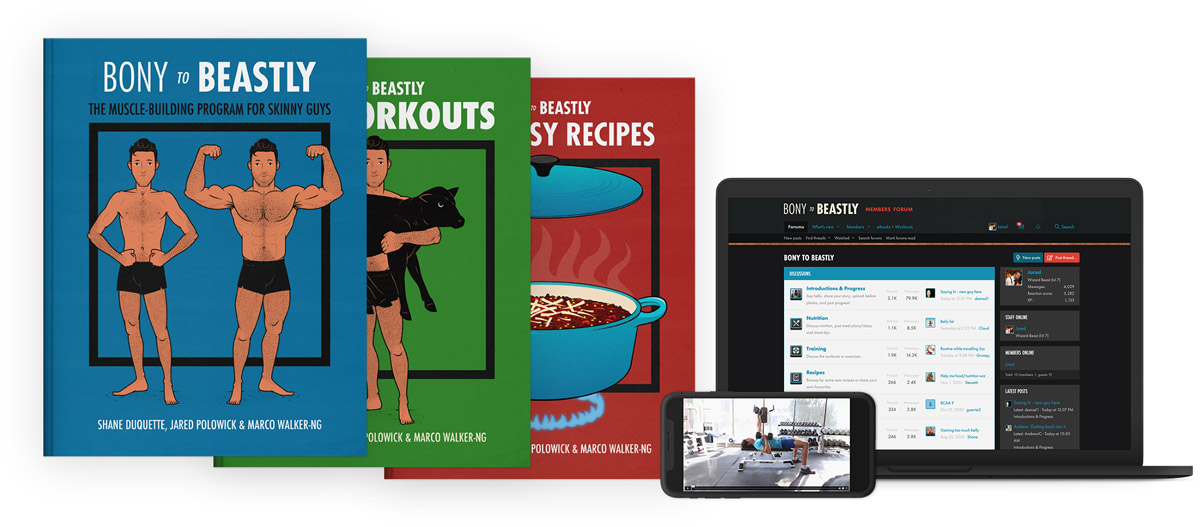
Alright, that’s it for now. If you want more muscle-building information, we have a free bulking newsletter for skinny guys. If you want a full foundational bulking program, including a 5-month full-body workout routine, a diet guide, online coaching, and a recipe book, check out our Bony to Beastly Bulking Program. Or, if you want a customizable intermediate bulking program, check out our Outlift Program.


Muscle-Building Mini-Course via Email
Sign up for our 5-part muscle-building mini-course that covers everything you need to know about:
Here are some related articles